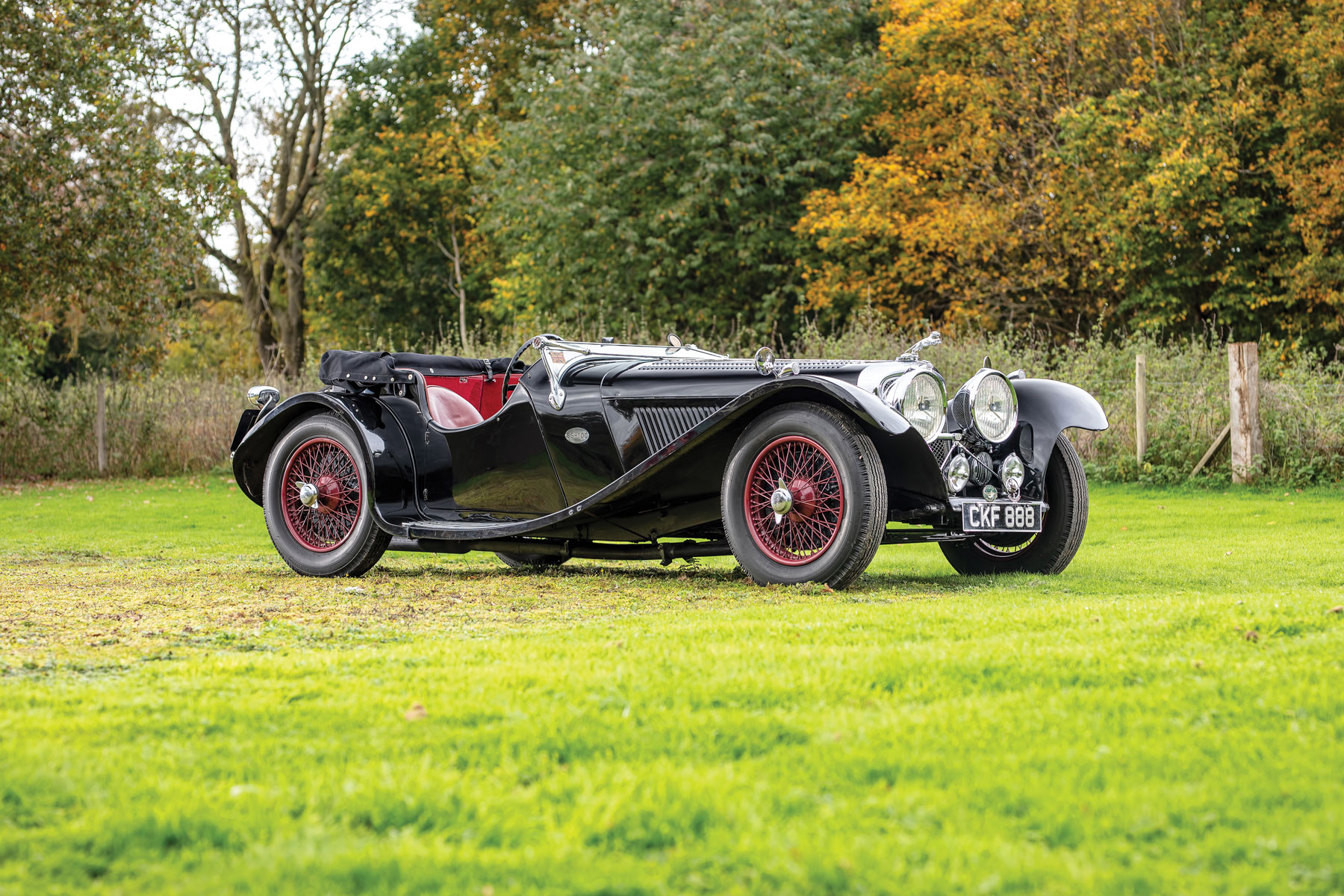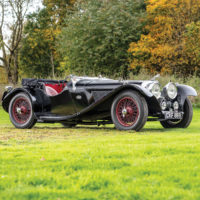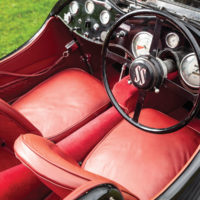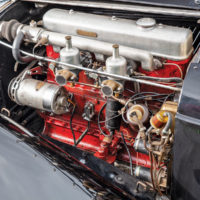SCM Analysis
Detailing
| Vehicle: | 1937 Jaguar SS 100 Roadster |
| Years Produced: | 1936–39 |
| Number Produced: | 314 (198 2.5-liters) |
| SCM Valuation: | $346,500 |
| Tune Up Cost: | $200 |
| Chassis Number Location: | Stamped in right chassis rail by front spring rear mount |
| Engine Number Location: | Stamped in right side of block |
| Club Info: | Jaguar Enthusiasts’ Club |
| Website: | http://www.jec.org.uk |
| Alternatives: | 1935–39 AC 16/80, 1936–40 BMW 328, 1948–49 Jaguar XK120 (alloy) |
| Investment Grade: | A |
This car, Lot 111, sold for $351,151 (£264,500), including buyer’s premium, at Bonhams’ Bond Street Sale on December 4, 2021.
Think “Olde English sports car” and the image that pops up will be a Jaguar SS. It’s compact and lithe, and the beautiful proportions are spot-on. The glamorous, tightly clothed, yet swoopy body helped establish the Jaguar tradition of making cars that looked more expensive than they were, sometimes hiding rather prosaic mechanicals. This, in contrast to German rivals that tended to be engineered the other way around. Speaking of which,, this car was born in the era when Jaguar thought it best to discreetly rename itself away from SS (Swallow Sidecar), which had gathered rather unpleasant connotations, though the SS model name hung on.
Loved, then languished
Our subject car was originally fitted with a 2.5-liter engine, number 252588. By the time Brian Wiggins bought it at a U.K. auction in February 1990, it was a 3.5-liter, according to the plaque on the dashboard relating to previous owner Dwight F. Brooks of Pasadena, CA. The engine number is now S529 (though erroneously recorded on the V5C registration document as 5529), which makes it a 1946–48 Mk IV unit. (We must assume that our subject’s original engine is not available — there’s no mention of it in the catalog.)
Wiggins, who made his fortune in the chemicals industry, was apparently an impulsive buyer of cars. He was a luminary in both the Rolls-Royce Enthusiasts’ Club and the Bentley Drivers Club, as well as being a Jaguar enthusiast and organizer of one of the first Round Britain Rallies that raised funds for charity. He died in 1996, after which his cars remained in storage in the garage he had built specifically for them. This Jaguar was the last of five cars offered from Wiggins’ estate at this Bonhams sale. Chassis number 18066 places it as an early 1937 2.5-liter. The 3.5-liters start “39,” and post-September 1937 2.5-liters start “49.”
Wiggins obtained the original registration number for the car, and judging from the invoices on file, appears to have had significant work carried out on both the bodywork and mechanicals. Photographs in the history file show the car with the body removed and some of the invoices refer to parts for a 1947 3.5-liter engine. Following the restoration to what looks like nice driver quality, the car was used only occasionally, it seems, for shows and rallies.
Hierarchy of value
This Jaguar ran when parked and, though homed in a purpose-built, heated and dehumidified building, will obviously need a going-through before use. That won’t have affected the value much, as having covered little mileage in Wiggins’ ownership, it remains in fairly good cosmetic condition aside from a tatty steering wheel.
What most knocks the value of an SS is not having its original engine. Original blocks have “SS” cast in the sides and later replacements don’t, so it’s easy to see if there has been a change. Remember, these are fairly cruddy pushrod engines converted from Standard side-valve units, and not the exotic and long-lasting Bill Heynes-devised twin-cam XK engine that arrived later, in 1948.
As a general rule, 3.5-liter SS models are worth more than 2.5-liter versions, but a 2.5 with its original engine is probably worth more than a 3.5 with a replacement. Let’s not go down the rabbit-hole of re-chassised cars, as you can make an SS 100 out of a 2-liter SS1. Following that logic, a 2.5 with a replacement, non-SS engine almost becomes a double negative.
Value in the eye of the beholder
The result is, for the driving enthusiast, the cheapest way of enjoying a 3.5-liter SS; for the collector, not so much. In 2018, 3.5s were getting either side of $800k, and even last September a 2.5 sold for over a half-million dollars. (The 3.5 at RM Sotheby’s Paris listed in Comps looks cheap, but the chassis number had been restamped, leading to questions over its provenance.) Last January in Arizona, RM Sotheby’s got $415k for a 3.5 (s/n 39032), so it seems this car’s price is in line with that gentle decline.
Would this car have fetched more if it had been original? Certainly, though by now quite a few have non-SS-branded replacement engines from later models. Last November, Silverstone got $372k for a 2.5 that retained its original engine. The result here is that this beautiful English roadster represents a driver-quality example of a seminal sports car at a relatively knock-down price. ♦



